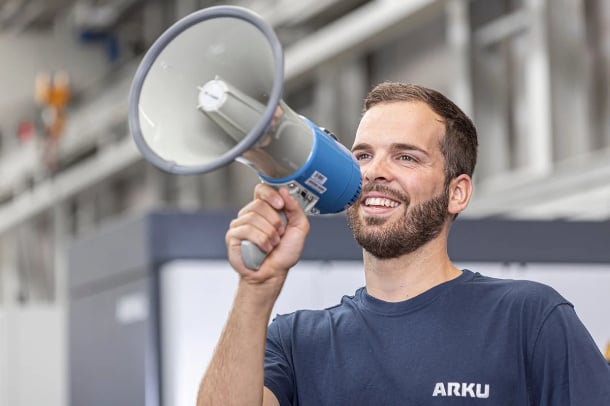If you want quality in your sheet metal processing, you can't get around roller leveling. Only with this process step can you be sure that the parts and sheets are flat and free of residual stresses. In this article we will show you exactly how the process works.
Roller leveling is a bending process in forming technology with rotating tool movement. More precisely, it is a roll bending process. It is used to make sheet metal as flat as possible and at the same time reduce residual stresses.
/REZ/lohnrichten-Teil-vor-nach-richten.jpg?width=1240&height=700&name=lohnrichten-Teil-vor-nach-richten.jpg)
Bending and counter bending makes sheets flat
Looking at the process in detail, stresses and unevenness in sheet metal are reduced by bending and counter bending or as as also referred to, elastic-plastic alternating bending. During roller leveling, the material to be straightened, i.e. a blank or a strip of sheet metal, is subjected to increasingly smaller alternating bends by staggered leveling rolls - alternately upward and downward. Figuratively speaking, the bending process resembles an outgoing sine curve. At the machine infeed, a curvature must be generated that is greater than the strongest curvature in the undirected state. Towards the outlet, the alternating curvatures decrease, so that uneven sections spring back to the flat state. This happens by overcoming the yield strength of the material. Straight sections retain their shape because the yield point is not exceeded here.
But how do these stresses and unevenness get into the sheet in the first place? The residual stresses in the material arise in the rolling process, through mechanical and thermal separation processes, and through the effects of heat. It is often impossible to avoid introducing residual stresses into the sheet metal or sheet metal parts during processing. The tricky thing about this is that residual stresses can hardly be measured non-destructively. On the other hand, virtually stress-free sheets are of great importance for downstream production steps such as welding. Therefore, there is no way around leveling if the quality of the work is not to be impaired by residual stresses.
Quality strongly depends on the leveler
In order to achieve consistent quality already during roller leveling, the levelers must have certain features or equipment variants. These include, for example, the block design of the leveling unit, a particularly rigid machine frame, the correct roller spacing and support, and the number of leveling rolls.
The leveling rolls arranged in an upper and lower block enable infeed with only two values, the infeed and outfeed values. This means that the distances between the leveling rolls, also called roll pitch, can be kept small. A small roll pitch effectively minimizes residual stresses in the sheet. Adequate support of the rolls minimizes the risk of deflection due to the large forces involved in the leveling process. In order to meet high flatness requirements, a sufficiently large number of leveling rolls is also necessary.
As a mechanical process, roller leveling is in any case the best way to bring parts and sheets into a flat and stress-free condition. Manual procedures, such as hammer and flame straightening, or even straightening with a press, require a lot of experience and a lot of time. In addition, the results are not as repeatable as with a precision leveling machine.
Magazine home page
